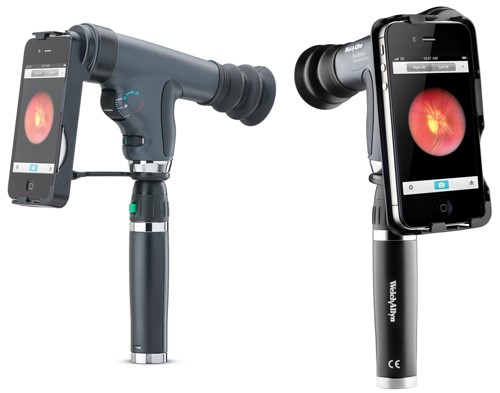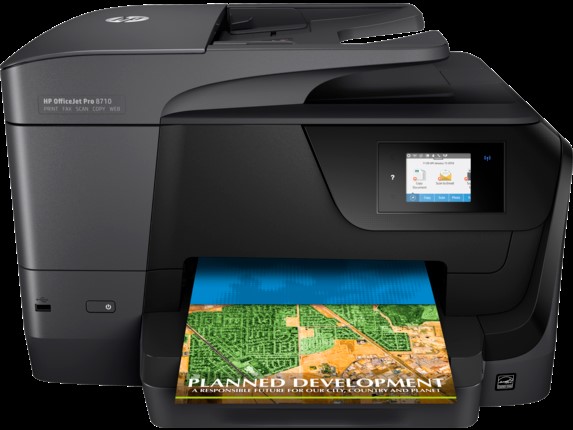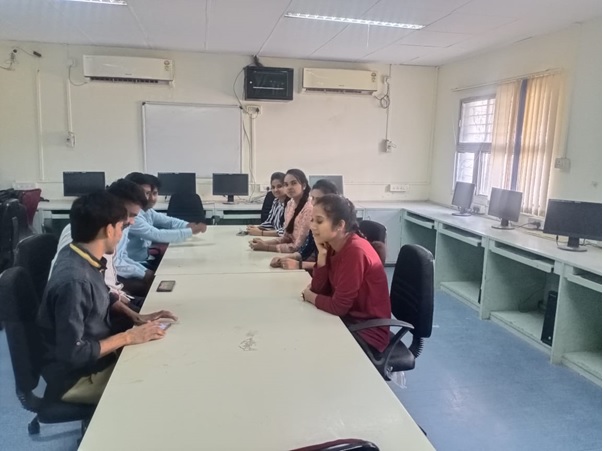Facilities
Augmented Human Computer Interaction Lab Equipment's (H/W & S/W)
Headset Sennheiser PC 360, Headset Sennheiser PC 350, Micro Mic C520 AKG, HP Z210 Workstation, HP Pavilion Desktop, MATLAB, Multi Speech, SciLab, PRAAT, Audacity, WEKA, Orange, Wave Surfer, HTK, CMU-Sphinix,Headphones,Mic’s
Events
A) Avishkar-2020 Coordinator
B) Avishkar-2023 Coordinator
Geospatial Technology Research Lab Equipment's
FieldSpec4, Quantum GIS, ILWIS, GRASS
- Establish under NRDMS, DST Srinivasa Rumanian Geospatial Chair
- Objective is Strengthen the research under Geospatial Technology.
- Total 6 students are working on the theme.
System Communication and Machine Learning Lab Equipment's (H/W & S/W)(SCM-RL)
Computerized Speech Laboratory, EEG Machine, EEG EMOTIV EPOC, CSL MAchine, Visi Pitch, MATLAB, PRAAT.
- Established under UGC, DST Fast Track Project.
- Objective is to establish Communication with system using EEG,Speech.
Objective of Lab (Thrust Area(s))
Our research activities span from fundamental research in signal processing and information theory. The laboratory conducts research in digital signal processing with emphasis on adaptive and statistical signal processing for images, speech, EEG and Emotion Recognition.
The system communication lab is responsible for providing learning experience in the Signal Processing, recognition and communication (Brain-Computer Interface, Remote Sensing & GIS, Image Processing, Animation, Artificial Intelligence, Neural Network, Fuzzy logic, Pattern recognition, Natural Language Processing, Computer Vision, Emotion Recognition, Signature Recognition, Medical Image Processing, Speaker Recognition) areas.
Fifteen research scholars are working in this Laboratory for their Ph. D. and M. Phil degrees.
Achievement in last five years
- Best Researcher Award: Mentored for International Research Award on New Science Interventions NESIN 2021 Award.
- Mentored in State Inter-University Research Convention for Post PG Students (PPG) level at “AAVISHKAR 2023”.
Equipment available
Research Funding (Grants Received from Agency)
|
Total Number of Project
|
Completed Projects
|
Ongoing Projects
|
Total Amount Mobilize
|
|
06
|
06
|
-
|
Rs. 30,915,709
|
Students working (Ph.D. Count/MPhil Count)
|
Students working
|
Awarded
|
Pursuing
|
|
Ph.D.
|
15
|
14
|
|
M.Phil.
|
21
|
01
|
|
M.Tech.
|
04
|
-
|
Lab Outcomes
Publications: 132 Books: 03 Chapters in book :06
Databases Created
| Sr. No. |
Name of Institute/Organization |
Title |
Database Size |
Name of Disease |
Resolution
|
Year |
|
1.
|
Department
Office environment |
System Communication Machine
Learning Research Laboratory (SCM-RL)
Speaker Database
|
1,64,000 Word Sentance
|
1. Isolated Speech Recognition-35000
2. Connected Speech Recognition-40000
3. Continuous Speech Recognition-25000
4. Vowel Recognition-21000
5. Digit Recognition-16000
6. IVRS Application-11000
7. Accent Identification-18000
8. Speaker Recognition-16000
9. Polyclinic Inquiry System-9000 (Word Sentence)
|
Hamming, 25 milliseconds
|
2010-2015 |
|
2.
|
Department of Cs and IT Auranabad. D
|
Development and Analysis of Predictive Model for Human Personality Identification through Signature and Palm
|
300
|
25 students who belong to the age group between 21 years to 27 years and 25 teachers who belong to the age group between 30 years to 46 years
|
of 200*100 pixels
Canon EOS 1300D- 18 Mega Pixel DSLR with APS-C CMOS sensor and Canon’s DIGIC 4+
|
2015 |
|
3.
|
Milind Mahavidyalaya. Dr. Ambedkar at the establishment of Milind Mahavidyalaya
|
Design and Modeling with Autodesk 3DS Max
|
100
|
Sony ILCA-68 DSLR
|
EV-2 to 18 (at ISO 100 equivalent).
|
2017 |
|
4.
|
Gautala Autramghat
|
Digitization of Medicinal Plants in Gautala Autram Ghat with Quick Response Code
|
50
|
Medicinal Plants
|
|
2021 |
|
5.
|
Govt. Hospital (GHATI), Aurangabad
(Self
Collected)
|
Computer
Aided Diagnosis System for Skin Disease
|
612
|
Acne, psoriasis, Eczema, Wart, Ringworm, Vitiligo, Skin Cold.
|
6016*3384
|
2020-2021 |
|
6.
|
Emotiv Epoc (14 Channel)
Department of CS and IT Aurangabad.
Research Scholar Student
|
Analysis of Neurocognition and Brain Dominance through EEG Signal Processing
|
450
|
5 subjects
English, Hindi, and Marathi
(10 Newspaper articles)
|
3 Iteration
(per article)
|
2022 |
Events Details
Multimodal Biometric Research Lab Equipment's
IBM server, Crossmatch Scanner, Palm scanner, Iris Scanner, High Resolution Scanner, Fingerprint Scanner, Stylus, Signature Scanner, MATLAB
- Established through UGC-SAP DRS Phase-I and Phase II.

- Objective of lab is to strengthen research under biometric and multibiometricdomain.
- Total 15 students are working on the theme.
Multispectral Research Lab Equipment's
This lab is having
- ASD Fieldspec-4 Spectroradiometer
- Envi
- ERDAS
- ArcGIS Software
- This facility is available for the student..
B) Lab of 20feet * 30 feet=600 Sq Feet Area of Lab with well furniture for the students.
C) Database: Leaf database, Palm print database, biomass database, Tomato Database, Soil Database, Fruit
Database, Pharmaceutical database, high resolution satellite image data from NRSC.
D) 6 Research Students working.
1) Multimodal Biometric Research
2) Geospatial Technology Research under the UGC SAP-II DRS Phase- I & Phase –II.
Outcomes:
- Developed multimodal database with some specific standards, using as Face, Ear, Fingerprint, Iris, Palm, Nail, Knuckle, Hand geometry, Online Signature, offline Signature, Retina, EEG, 3D face, 3D Ear, HRV, etc., modalities of 250 different Subjects. This goes around 80225 image templets. It has more Variety along with Multisession, Multisensory and Multimodalities.
- Design and develop the algorithms for feature extraction, processing, analysis and recognition for multimodal biometric system through the framed databases.
- Developed a Biometric system based on Heart Rate Variability (HRV) Measurement under RUSA Major Research Project.
- Developed and created multimodal imaging and nominating, remote sensed data bases for spectral signature, Land use land cover, change detection, crop type classification, and applications.
- Developed our own spectral libraries, spectral signatures and tools for processing and analyzing Crop, Plant, Herbal Plants, Soil, Rock, area of applications.
- Developed& launched open source software tool version 0.1 to the Nation for hyperspectral data processing and Analytics under Network Project of Imaging Spectroscopy and Application (NISA) of Department of Science & Technology (DST) Govt. of India.
- We have successfully conducted 19th different courses Outreach Distance Learning Program Organized by IIRS (ISRO, Dept. of Space, Govt. of India). More than 225 students, Research Scholar, Faculties get benefited.
- Created More than 18 research students fellowship under UGC BSR Research Fellow under the UGC SAP-II DRS Phase- I & Phase –II. Also two full time and two part time research fellows are working under Visvesvaraya PhD Scheme of Dept. of Electronic & I.T., Govt. of India.
- E-journal Resource Facility created for Research Students & Staff Members.
- Successfully carrying Visvesvaraya PhD Scheme of Dept. of Electronic & I.T., Govt. of India for two full time and two part time research fellows in s/w tools developments.
- Very advanced course module of remote sensing, GIS, Geospatial Technology, Multimodal Biometrics has been taken and adopted in our Masters, M.Tech, MPhil, PhD Program under theme facility created. And more than 50 students completed their Mtech, 15+ PhD and 10+ MPhil degree under this theme.
- File six patents on the theme.
B) FIST Program
Department of Computer Science & Information Technology, Dr. Babasaheb Ambedkar Marathwada University is recognized under prestigious under the Funds for Infrastructure under Science and Technology (DST-FIST) program with sanction no. SR/FST/ETI-340/2013 (2013-2018) of approx. Rs. 1.22 Crores.
The department having highly equipped laboratory to impart knowledge in Remote Sensing and GIS field including recent technologies.
Department has created new state-of-art infrastructure for:
- Multispectral / Hyperspectral Research laboratory with the capacity of 20 students.
- Dark room facility for ASD FieldSpec4 device for data collection.
- Department have high resolution all in one large format scanner, printer, workstations and peripherals.
- Department have books for the ready reference to the student working under the same domain and supported with necessary infrastructure.
- Department equipped with ENVI and ERDAS Software’s for analysis of remotely sensed data.
Work on different application areas like
- Optimal feature and selection for enhancing hyperspectral palm print recognition,
- Winter crop discrimination,
- Spatial &spectral feature extraction for soil,
- Tracing the metal content from the seasonal fruit in the market of Aurangabad city.
- Estimation of phosphorus content in leaves of plants.
- Estimation of copper content in soil.
- Spectroscopic determination of above ground biomass in grass.
- Hyperspectral analysis of nitrogen present in soil, quality assessment of pharmaceutical product is in progress.
Some students have already completed their work on analysis of effect of air pollution on chlorophyll, water, carotenoid and anthocyanin content of tree leaves, determination of leaf nitrogen concentration of tomato plant, spectral analysis of chlorophyll, water content within fresh and water stressed leaves, detection of pesticide, analysis of effect of 2, 4-D Amine on chlorophyll content in wheat and corn, identification of Arsenic content in soil, detection of acid rain stress effect on plants, monitoring Hydrocarbon contamination of agricultural soil.

Data Analytics Research Lab
- Establish under AICTE-MRP.
- Objective is to strengthen area of Big Data Analytics.
- Total 8 students are working on the theme.
Hardware Requirements:
- High performance computers or servers capable of handling large datasets and complex computations.
- Sufficient storage space for storing datasets, intermediate results, and analytical outputs.
- GPU (Graphics Processing Unit) for tasks involving deep learning or GPU accelerated computations.
Software Requirements:
- Data analytics software such as Python with libraries like Pandas, NumPy, SciPy, and scikitlearn for data manipulation, analysis, and machine learning.
- Tools for data visualization like Matplotlib, Seaborn, Plotly, or Tableau for creating meaningful visual representations of data.
- Database management systems like MySQL, PostgreSQL, or MongoDB for storing and retrieving structured data.
- Frameworks for big data processing like Apache Hadoop, Spark, or Dask for handling large scale datasets.
Data Sources:
- Access to various data sources such as public datasets, APIs, or proprietary data sources depending on the lab's focus and objectives.
- Collaboration with other departments, organizations, or research institutions for access to domain specific datasets.
Data Governance and Security:
- Implementation of data governance policies to ensure proper handling, storage, and sharing of data in compliance with regulations (e.g., GDPR, HIPAA).
- Deployment of security measures to protect sensitive data from unauthorized access or breaches.
Collaborative Tools:
- Collaboration platforms like Git for version control, Jupyter Notebooks for sharing code and analysis, and communication tools like Slack or Microsoft Teams for team collaboration.
Training and Skill Development:
- Training programs and resources to enhance the skills of lab members in data analytics, machine learning, statistics, and programming.
- Continuous learning and staying updated with the latest developments in data analytics and related technologies.
Project Management:
- Utilization of project management tools like Trello, Asana, or Jira for managing tasks, deadlines, and project workflows.
- Agile methodologies for iterative development and adaptation to changing requirements.
Ethical Considerations:
- Adherence to ethical guidelines for data collection, analysis, and usage, ensuring fairness, transparency, and accountability in decision making processes.
- Responsible handling of sensitive or personally identifiable information to protect individuals' privacy rights.
Documentation and Reporting:
- Documentation of data analytics processes, methodologies, and findings to facilitate reproducibility and knowledge sharing.
- Preparation of reports, presentations, or dashboards for communicating insights and recommendations to stakeholders.
Continuous Improvement:
- Regular evaluation and optimization of data analytics workflows, infrastructure, and methodologies to enhance efficiency, accuracy, and scalability.
- Solicitation of feedback from stakeholders and incorporating lessons learned into future projects.
Biomedical Image Processing Lab Equipment's PI Name: Dr Manza R. R.
- Objectives of Lab (Thrust Area(s)),: Early detection various diseases from analysis of biomedical images and development of wearable biomedical devices to diagnose the diseases.
| Equipment |
|
Equipment |
|
| Lenovo Desktops |
 |
Wipro Desktops |
 |
| Panoptic Ophthalmoscope |
 |
HP All in One Printer |
 |
| Dell Ultrabok |
 |
Lab |
 |
Research Funding (Grants Received from Agency)
- "Development of Multi Resolution Analysis Technique for Early Detection of Non-Proliferative Diabetic Retinopathy without using Angiography", Sanctioned by DST New Delhi, (Rs. 23,04,000/-)(F. No. SERB /F /2294/ 2013-14).
- "Development of Color Image Segmentation and Filtering Techniques for Early Detection of Diabetic Retinopathy", Sanctioned by UGC New Delhi (Rs. 11,73,300/-), F. No (41-651/2012 (SR)
Students working (Phd Count/MPhil Count)
Lab Outcomes
- Publications:47 Patents: 03 Books: 10
- Any Software/Hardware Prepared: Early detection tools and Mobile Apps for Diabetic Retinopathy
Augmented Human Computer Interaction Lab Equipment's (H/W & S/W)
Headset Sennheiser PC 360, Headset Sennheiser PC 350, Micro Mic C520 AKG, HP Z210 Workstation, HP Pavilion Desktop, MATLAB, Multi Speech, SciLab, PRAAT, Audacity, WEKA, Orange, Wave Surfer, HTK, CMU-Sphinix.
- Establish under UGC MRP.
- Objective is to develop Speech Analysis and Interactive system.
- Total 10 students are working on the theme.
Vision and Intelligent System Lab Equipment's (H/W & S/W)
The Vision and Intelligence System Lab is a cutting-edge facility dedicated to research and development in the field of vision and artificial intelligence. Equipped with state-of-the-art technology and infrastructure, the lab provides an ideal environment for innovative exploration and experimentation.
Equipment’s available: No. of Computer: 24, No of Printer: 03, Scanner: 01,3D printer: 01, Raspberry pi and sensor Kit: 10,Projector: 02, Laptop: 03,Tripod: 02,Sony camera: 01,,RONALD AV Mixer
Infrastructure Facilities: In terms of infrastructure facilities, the lab is well-equipped with desktop setups, LAN connectivity, air conditioning, fans, lights, and a router, ensuring a comfortable and efficient working environment for all researchers and students.
Databases created: 1. “vVISWa” an Audio-Visual Isolated words Database
No. of research students: 1. Ph.D Awarded: 04 Working: 06
2. M.Phil Awarded: 06 Working: 01
Vision and Intelligent System Lab Equipment's (H/W & S/W)
4 Channel RONALD Mixer, SONY PJ660. PJ 650 HDR, HP PROLIANT Workstation, Dell Desktop, MATLAB R2014a, Xilisoft Video Cutter Software
- Established under DST Fast Track Scheme.
- The objective of this research lab is to contribute in machine cognition world and make computer system more interactive. The problem undertaken in this research laboratory are targeting to research areas like Computer Vision,
 Pattern Recognition, Video Surveillance, Audio-Visual Speech Recognition Interactive Intelligent System, IoT, Facial Expression Mining and Optical Character Recognition.
Pattern Recognition, Video Surveillance, Audio-Visual Speech Recognition Interactive Intelligent System, IoT, Facial Expression Mining and Optical Character Recognition.
Computer Vision Lab
- Objective of lab is to strengthen research under computer vision and Pattern Recognition domain.
- Total 3 students are working on the theme.
Advance Computing Lab
- Objective of lab is to strengthen research under advances in the help of Image Processing, Pattern Recognition and Intelligent System.
- Total 3 students are working on the theme.
Computational & Psycho – Linguistic Research Lab
Python, Matlab
- Establish under UGC and University Project.
- Objective is Strengthen the research under Natural Language Processing and Document Processing. Total 6 students are working on the theme.